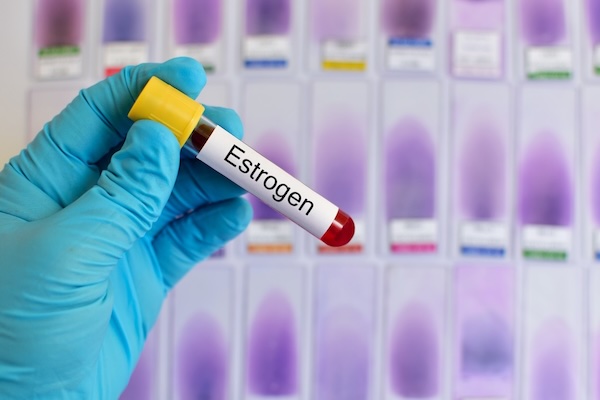
By Jeff Rice
Original Posting Here
Thousands of different chemicals are flushed into Puget Sound every day through wastewater treatment plants, but some of these chemicals may cause more harm than others. Relatively benign compounds like caffeine and sucralose are found alongside cancer drugs and synthetic hormones that can disrupt the development and breeding of fish and other wildlife.
Scientists at the Puget Sound Institute are working to prioritize these contaminants of emerging concern (CECs) with an eye toward gauging which of these poorly understood chemicals are the most harmful and which should be targeted for further investigation. A recent study, in collaboration with researchers at Western Washington University, the Washington Department of Fish and Wildlife, and the Puyallup Tribe of Indians has identified 57 high priority CECs for further monitoring and research. Many of the chemicals on the list are synthetically derived but researchers also identified a prevalence of naturally occurring hormones that humans create in their own bodies. Among these are estrogens (like 17 beta-estradiol) which primarily originate from females but are excreted by all humans.
In studies published last year by the Puget Sound Institute in collaboration with the Puget Sound Ecosystem Monitoring Program, researchers found that concentrations of some estrogen hormones measured in English sole from Puget Sound matched concentrations previously shown to affect endocrine function. Traces of estrogen were also found in Chinook blood plasma in levels that raise worries about the potential effects on these endangered salmon.
We spoke with Puget Sound Institute scientist Maya Faber about this research and the reasons behind ongoing concerns about the impacts of fish exposures to estrogens and other hormones that make their way into Puget Sound.
Puget Sound Institute (PSI):
I have heard about concerns over synthetic hormones like birth control pills that are getting into the water. But I have not heard much reporting on naturally occurring estrogen. Can you tell me more about this?
Maya Faber (MF):
Synthetic estrogens are considered highly potent, but natural estrogens have similar effects if they’re at high enough concentrations. These chemicals get out into the environment and into fish, particularly fish that reside near locations where sewage enters Puget Sound, originating from wastewater treatment plant effluent, combined sewer overflows, or on-site sewage systems.
PSI:
What are some of the effects that scientists have seen in fish that are exposed to these estrogenic compounds?
MF:
Our study focused on the reproductive effects of estrogen exposures on English sole. In female English sole, exposures may lead to altered reproductive timing or it can lead to vitellogenin induction in males. Vitellogenin is an egg yolk precursor protein, relevant to female fish. Under normal conditions, vitellogenin is almost never present in males and almost always present in reproductive females. Its presence in males is strong evidence that they have been exposed to estrogenic chemicals. These types of effects can happen to other fish in general, but specifically, these impacts have been observed in English sole in Puget Sound.
PSI:
How concerned are you about these chemicals?
MF:
The altered timing of female reproductive cycles is a cause for concern. For example, English sole will return to their foraging grounds after the expected spawning period has passed. Researchers have observed females in the spawning grounds carrying ripe eggs that have missed the spawning period window, indicating a loss in that part of the population.
This raises questions about potential impacts on other species in the region, like Chinook salmon. Considering the differences in life histories between the species, Chinook are going to have a completely different exposure profile than English sole, so it would be interesting to explore whether there is an effect.
PSI:
Are there other naturally occurring hormones that scientists are worried about?
MF:
The reason that we chose to focus on estrogens is because the disruption they cause to the reproductive cycle of male and female fish has been extensively researched and documented. There are other hormones on our list, such as androgens from males, but we haven’t done that same sort of investigation. I wouldn’t want to say that those other compounds are less toxic, or less of a priority, unless we did that sort of deeper dive into those specific effects.
PSI:
So, there could be testosterone in there that is causing effects as well?
MF:
Right. We just don’t know. And there are 57 chemicals on our list. That’s a lot of chemicals. One of the things that’s recommended is that the chemicals in this study need more investigation.
PSI:
Are livestock and agriculture also releasing estrogen into the water?
MF:
Yes, pigs, sheep, cattle, and chickens, will also shed natural estrogens. That will show up in their manure, which is sometimes applied to the fields and can get into Puget Sound.
PSI:
What about estrogenic compounds from plants?
MF:
Yes. Phytoestrogens were also prioritized in our work, with some included on our high priority list, and they have been associated with effects on fish and on humans as well. Phytoestrogens are naturally found in fruits, vegetables, and nuts, and they are added to some supplements. However, when they are out in the environment, they are mixing in this sort of soup of other chemicals, so it’s challenging to parse out what the combined effects are going to be, or what the negative effects are going to be, especially when you consider how fish are exposed. For fish, water and water-borne substances pass through their gills during respiration, resulting in a more continuous and pervasive exposure.
PSI:
Well, that raises the next question, which may be beyond the scope of your work. How might these estrogenic chemicals be affecting other humans? If they can affect the fish, they can affect us too, right?
MF:
This is a common thing that people ask with fish as a food source or our own exposures from drinking water. In our work we focused on the effects on fish. But it’s a question I have asked. If the fish are exposed, what’s my exposure? Because estrogens are not completely removed during the treatment process, they are introduced into receiving waters and can make their way into drinking water sources. Other research has concluded that estrogens present in drinking water are not causing adverse effects in humans in the U.S, with total exposures of estrogens in drinking water that are estimated at about 150 times less than cow milk. And so, it’s considered to not to be at levels that affect humans. [Editor’s note: More information on this subject is available in the article An Assessment of Potential Exposure and Risk from Estrogens in Drinking Water – PMC (nih.gov).]



